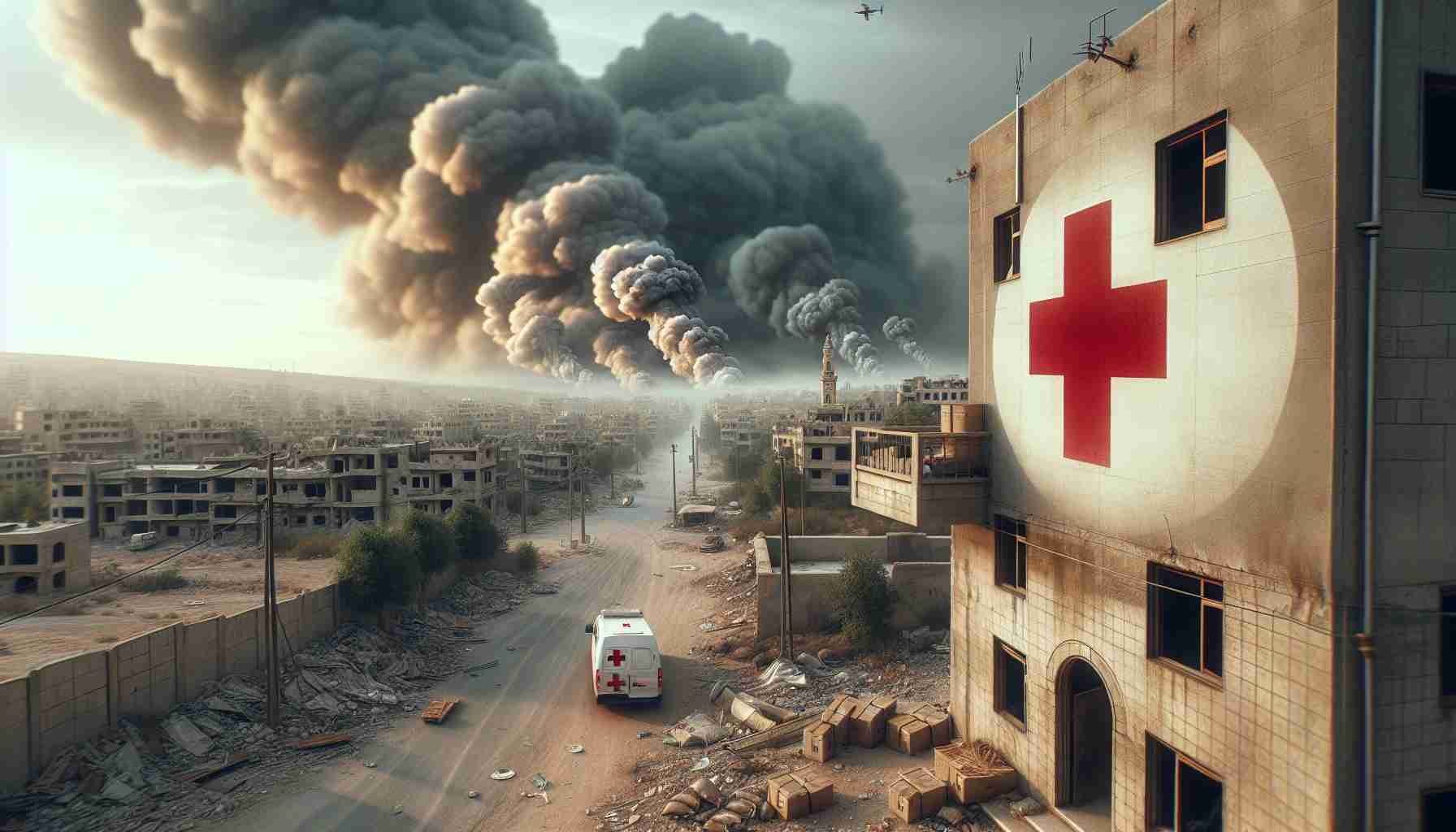
Recent research has raised alarms over the safety of hospitals in the Gaza Strip amidst ongoing military operations. A significant number of bomb craters, resulting from the use of M-84 bombs, have been identified dangerously close to medical facilities following Israel’s military campaign that began on October 7, 2023, after militant actions in Israel prompted heightened conflict.
Using satellite data and geospatial information, a team led by Harvard University’s Dennis Kunichoff assessed attacks from October 7 to November 17, 2023. Their study focused on 36 hospitals and identified 592 bomb craters in the vicinity. The analysis revealed that nine hospitals were located within a perilous 360 meters of bomb sites, an area associated with severe risk, while an additional 30 hospitals fell within an 800-meter range where damage can still occur.
The findings show critical concerns regarding adherence to international humanitarian laws designed to protect medical facilities. The researchers noted that two hospitals faced bombardments near 21 and 23 bomb craters, further highlighting the dangers posed to healthcare infrastructure in active conflict zones.
Although the study provided valuable insights, it acknowledged limitations due to its reliance on satellite imagery, which may not comprehensively depict actual damage or casualties. The researchers emphasize the necessity for stricter protections for hospitals to ensure their safety amid ongoing hostilities.
Research Intensifies Focus on Threats to Hospitals During Conflict in Gaza
The ongoing conflict in Gaza has drawn renewed attention to the alarming risks faced by medical facilities amidst military operations. A recent study reinforces concerns regarding the safety of hospitals, which play a critical role in treating the injured during warfare. As violence escalates, the pressing question becomes: how can the international community better protect healthcare in conflict zones?
Key Findings and New Insights
The study conducted by researchers at Harvard University, led by Dennis Kunichoff, utilized satellite and geospatial technology to analyze military actions between October 7 and November 17, 2023. While previous reports have highlighted the bombing of hospitals, this research uniquely details how the proximity of bomb craters can jeopardize the operational capacity of these vital institutions. In total, the study indicated that over 80% of hospitals in the analyzed area lie within dangerous limits to bomb sites, which brings to light a disturbing trend in modern warfare where medical facilities are increasingly caught in the crossfire.
Critical Questions and Answers
1. What are the implications of bombings near hospitals?
The implications are dire: inadequate access to medical care for civilians, increased mortality rates, and long-term health crises as healthcare infrastructure becomes compromised.
2. How do current laws protect healthcare facilities during conflict?
International humanitarian law stipulates that hospitals should be protected, classified as non-combatant zones. Violations of these laws can lead to war crime allegations but enforcement remains inconsistent, raising concerns about accountability.
3. What role does satellite imagery play in assessing damage?
Satellite imagery provides a broader overview and helps map the extent of bomb damage, but it cannot capture the entire reality, such as the psychological impact on patients and the operational state of medical staff.
Challenges and Controversies
The study presents multiple challenges, such as verifying the full extent of damage, understanding the psychological impact on healthcare workers and patients, and the difficulties in enforcing international laws. Controversies arise regarding the justification of military actions near civilian infrastructure, leading some to argue that existing legal frameworks are insufficient to prevent such atrocities.
Advantages and Disadvantages of the Current Situation
Advantages of such studies include increased awareness and potential for global advocacy and policy changes aimed at improving the safety of medical facilities. On the flip side, the persistent risks highlight significant disadvantages: ongoing threats to human life, a growing casualty rate, and a potential humanitarian disaster as healthcare systems collapse under the pressure of warfare.
Conclusion
The need for robust international mechanisms to protect healthcare is more pressing than ever. Increased collaboration among governments, NGOs, and healthcare organizations could pave the way for innovative solutions that ensure the safety of medical facilities in conflict zones. Addressing these challenges requires global commitment and a rethinking of military strategies that prioritize the sanctity of human life and the necessity of medical care.
For further information on protecting healthcare in conflict zones, visit ICRC.



